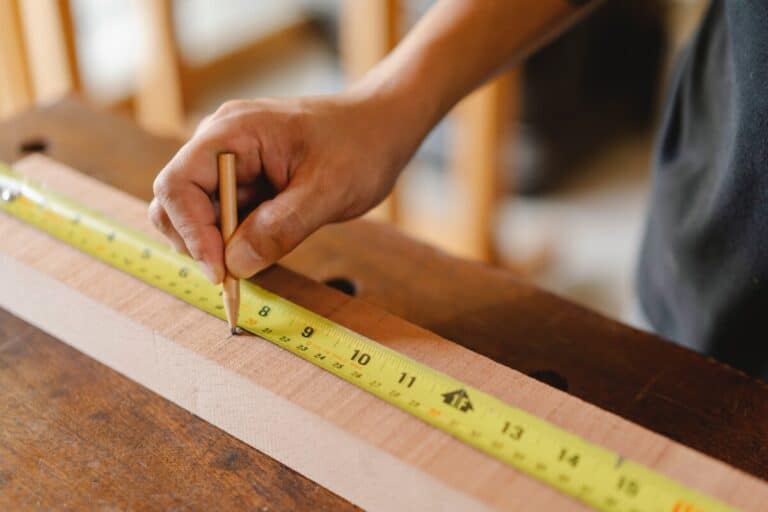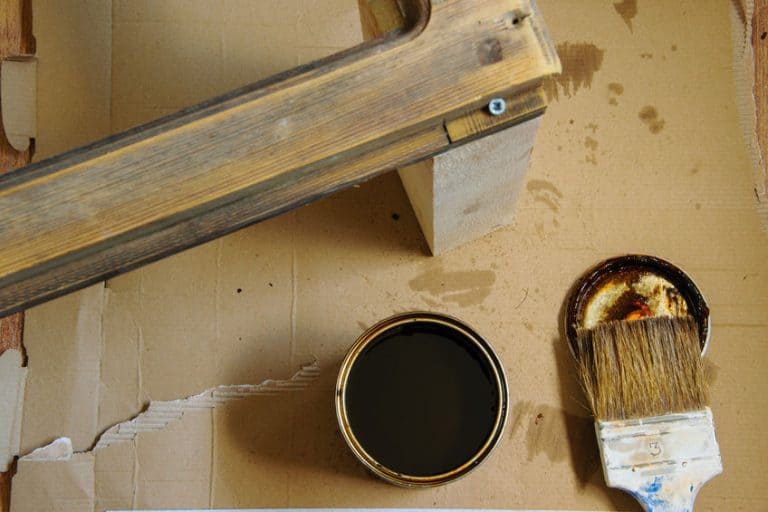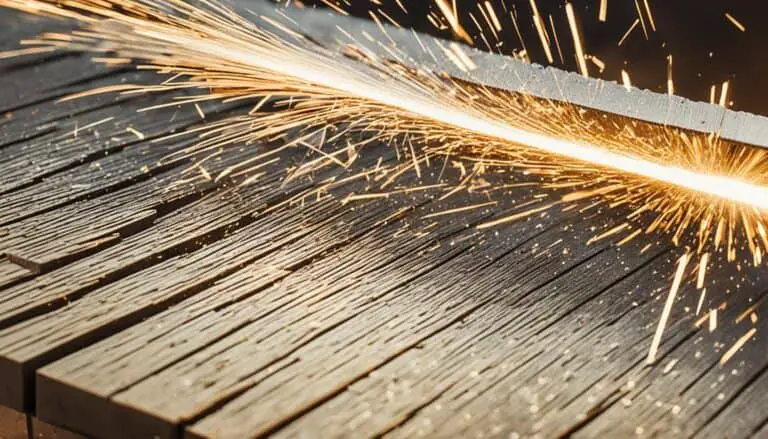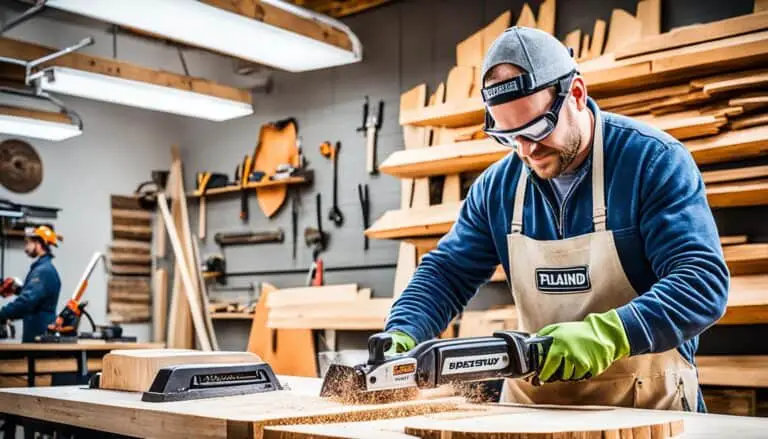Are you ready to take your woodworking projects to the next level? It all starts with choosing the right materials. From the type of wood to the essential tools and supplies, every aspect matters when it comes to achieving superior craftsmanship. But with so many options out there, how do you know which woodworking materials are the best?
In this article, we will guide you through the top woodworking materials that will elevate your projects. Whether you’re a passionate DIY enthusiast or a professional woodworker, these materials will help you create beautiful and functional pieces that stand out. So, let’s dive in and discover the key elements that make a difference in woodworking success.
Key Takeaways:
- Choosing the right woodworking materials is essential for superior craftsmanship.
- From lumber to tools and supplies, every aspect of woodworking materials matters.
- Discover the top woodworking materials that will take your projects to the next level.
- Whether you’re a DIY enthusiast or a professional woodworker, these materials will help you achieve exceptional results.
- Don’t settle for average, elevate your woodworking projects with the best materials.
Essential Woodworking Tools
When it comes to woodworking, having the right tools can make all the difference in the outcome of your projects. Here are some essential woodworking tools that every woodworker should have in their arsenal:
| Tool | Description |
|---|---|
| Power Drills | A power drill is a versatile tool that allows you to drill holes and drive screws with ease. Look for one with adjustable speed settings for greater control. |
| Jig Saws | A jig saw is perfect for cutting curved or intricate shapes in various materials. It offers precise cuts and is easy to maneuver in tight spaces. |
| Circular Saws | A circular saw is a must-have for making straight cuts in lumber and plywood. Look for one with adjustable depth settings for different thicknesses. |
| Sander | A sander is essential for achieving smooth and even surfaces on your projects. Consider a random orbital sander for versatility and minimal sanding marks. |
| Mallets | Mallets are commonly used in woodworking for striking chisels and driving joints together. Look for one with a hardwood handle for durability. |
| Chisels | Chisels are indispensable for carving, shaping, and cutting wood. Invest in a set that includes different sizes and shapes for various tasks. |
| Clamps | Clamps are essential for holding pieces of wood together while the glue dries or when making precise cuts. Have a variety of sizes and types to suit different project needs. |
These are just a few examples of the essential woodworking tools that can help you achieve professional-level results. Remember to choose high-quality tools that are comfortable to use and built to last. With the right tools in hand, you’ll be ready to tackle any woodworking project with confidence.
Quality Lumber for Woodworking
The type of wood you choose for your woodworking projects can greatly impact the final result. The right lumber can enhance the overall aesthetics and durability of your creations. Let’s explore some common types of lumber used in woodworking:
1. Hardwood Lumber
Hardwood lumber comes from deciduous trees and is known for its strength and durability. It is commonly used in high-quality furniture, cabinets, flooring, and decorative pieces. Some popular hardwood options for woodworking include:
- Maple: Maple wood is strong, durable, and has a light color that can be stained to match your desired finish.
- Walnut: Walnut wood has a rich dark color and a beautiful grain. It is often used for luxurious furniture pieces.
- Cherry: Cherry wood has a reddish-brown color that deepens over time. It is highly regarded for its smooth finish and is commonly used in cabinetry.
2. Softwood Lumber
Softwood lumber comes from coniferous trees and is typically more affordable than hardwood. It is widely used for construction purposes and general woodworking projects. Some popular softwood options for woodworking include:
- Pine: Pine wood is lightweight and easy to work with. It has a pale color and can be stained or painted to achieve different finishes.
- Cedar: Cedar wood is known for its natural resistance to decay and insect infestation. It has a pleasant aroma and is often used for outdoor furniture and decking.
- Spruce: Spruce wood is strong, straight-grained, and has a light color. It is commonly used for various woodworking projects, including furniture and interior trim.
When choosing the right lumber for your woodworking projects, consider the desired appearance, strength, and suitability for the intended use. Each type of wood has its unique characteristics, so it’s essential to select the appropriate lumber that aligns with your project requirements.
Essential Woodworking Supplies
In addition to tools and lumber, there are various supplies that are essential for woodworking projects. These supplies include:
- Wood Glue:
- Sanding Paper:
- Finishing Products:
- Measuring Tools:
- Clamps:
- Safety Equipment:
- Fasteners:
- Woodworking Plans:
- Dust Collection System:
Wood glue is a fundamental supply that is used to bond pieces of wood together. It provides a strong and durable connection, ensuring the longevity of your woodworking projects. Additionally, sanding paper is essential for smoothing and refining the surface of your woodwork, creating a polished and professional finish.
After sanding, finishing products such as sealers, stains, or varnishes can be applied to further enhance the appearance and protect the wood from wear and tear.
Measuring accurately is an integral part of woodworking, making measuring tools like a tape measure, combination square, and marking gauge indispensable. These tools ensure precision and consistency in your projects.
Clamps are crucial for holding pieces of wood firmly in place during assembly or while the glue dries. They help create tight joints and prevent any movement or shifting.
Woodworking can be hazardous, so safety equipment such as safety glasses, ear protection, and dust masks should always be used to safeguard yourself from potential injuries.
Fasteners such as nails, screws, and dowels are necessary for securing the different components of your woodwork. Choosing the appropriate fasteners ensures structural stability and durability.
Woodworking plans provide detailed instructions and diagrams that guide you through various projects. They help save time, prevent mistakes, and offer inspiration for your own designs.
Lastly, a dust collection system is essential for maintaining a clean and safe workshop environment. It helps capture the dust and debris generated during woodworking, promoting better air quality and reducing the risk of respiratory issues.
By having these essential woodworking supplies in your workshop, you’ll be well-equipped to tackle a wide range of woodworking projects with confidence and success.
Wood for DIY Projects
If you’re interested in DIY woodworking projects, choosing the right type of wood is crucial for the success of your endeavors. Different woods have distinct characteristics that affect their workability, durability, and overall appearance. Here are some popular wood choices for your DIY projects:
- Softwood: Softwood, such as pine or cedar, is an excellent option for beginners. It’s readily available, affordable, and easy to work with. Softwood is often used for outdoor projects like decks, fences, and planters.
- Hardwood: Hardwood, such as oak or maple, is known for its strength, durability, and natural beauty. It’s ideal for indoor furniture, cabinetry, and decorative items. Hardwood requires more advanced woodworking skills and tools.
- Plywood: Plywood is made from thin layers of wood veneer glued together, resulting in a strong and versatile material. It’s commonly used for cabinets, shelves, and DIY projects that require stability and structural integrity.
- MDF: Medium-density fiberboard (MDF) is an engineered wood product made from wood fibers and resin. It’s affordable, smooth, and uniform in density, making it suitable for painted projects like cabinets, trim, and furniture.
Each type of wood has its unique characteristics and advantages, so consider your project requirements and personal preferences when selecting the wood for your DIY endeavors. Experiment with different wood types to discover the one that best suits your style and skills.

With the right wood and craftsmanship, your DIY woodworking projects will come to life. Remember to prioritize safety, use proper tools and techniques, and let your creativity flourish. Happy woodworking!
Where to Buy Woodworking Materials
When it comes to your woodworking projects, finding high-quality materials is essential for achieving outstanding results. Fortunately, there are several places where you can purchase top-notch woodworking materials. Whether you’re looking for lumber, tools, or supplies, these options have got you covered:
- Local Lumber Yards: Visit your local lumber yard for a wide selection of high-quality wood. These establishments specialize in providing various types of lumber suitable for all your woodworking needs.
- Woodworking Stores: Dedicated woodworking stores offer a comprehensive range of materials, tools, and supplies specifically tailored to the needs of woodworkers. These stores typically have knowledgeable staff who can provide expert advice on choosing the right materials for your projects.
- Online Retailers: Online platforms, such as Amazon, Home Depot, and Woodcraft, provide convenient access to a vast array of woodworking materials. With just a few clicks, you can browse through a wide selection of products and have them delivered right to your doorstep.
Before making a purchase, ensure that you carefully consider your project requirements and specifications. Take into account factors such as the type of wood, size, and quality of materials to ensure the best possible results. Remember to compare prices, read customer reviews, and verify the reliability of the seller before finalizing your purchase.
To enhance your woodworking experience, it’s essential to invest in high-quality materials that meet your project’s needs. Explore these sources to find the perfect woodworking materials for your next masterpiece.
Choosing the Right Woodworking Hardware
Woodworking hardware plays a vital role in bringing your woodworking projects to life. These essential components and accessories are necessary for ensuring the functionality, durability, and overall aesthetic appeal of your creations. Whether you’re a seasoned woodworker or just starting out, having the right woodworking hardware is crucial for achieving professional-grade results.
Types of Woodworking Hardware
There are various types of woodworking hardware that you need to consider for your projects. Here are some essential items:
| Hardware Item | Description |
|---|---|
| Screws | Used for fastening wood pieces together, screws provide a secure and reliable connection. |
| Nails | Ideal for lighter-duty applications, nails offer a quick and efficient way to join wood components. |
| Hinges | Essential for cabinet doors, hinges allow smooth, controlled movement and secure closure. |
| Drawer Slides | For smooth and effortless drawer opening and closing, drawer slides provide stability and convenience. |
| Knobs and Pulls | These hardware elements add a decorative touch while also providing a functional grip for drawers and cabinets. |
| Handles | Handles are used for doors and larger drawers, making them easy to open and close. |
In addition to these items, woodworking hardware also includes essentials such as brackets, hooks, locks, and latches. These components ensure that your projects are structurally secure and properly functioning.
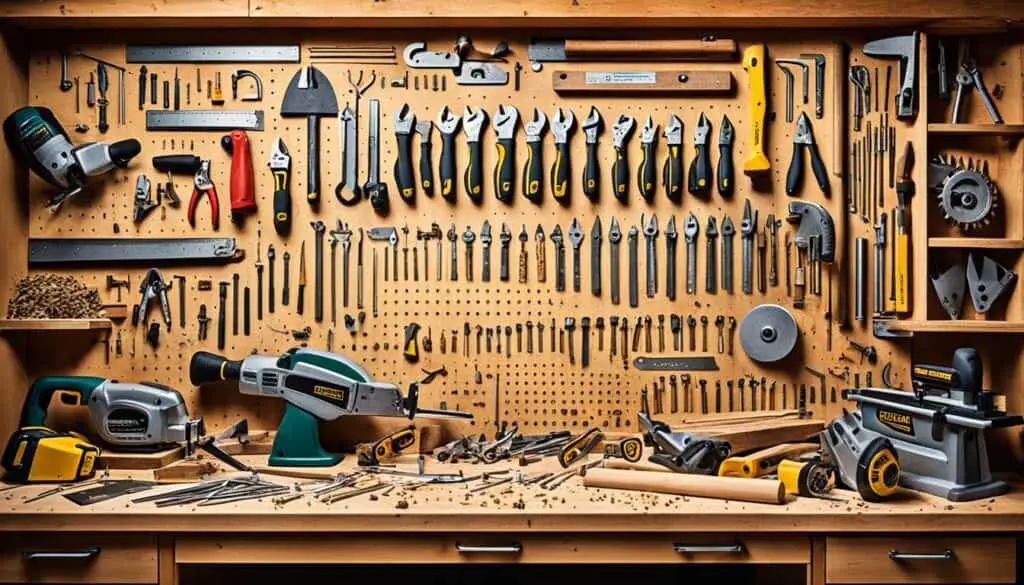
When choosing woodworking hardware, it’s important to consider factors such as the type of project, material compatibility, and desired aesthetics. Additionally, ensuring the quality and durability of the hardware is crucial for long-lasting results.
Having the right woodworking hardware not only enhances the functionality of your projects but also adds a professional touch to your craftsmanship. Invest in high-quality hardware to achieve outstanding results.
Woodworking Equipment for Professional Projects
For professional woodworkers or those looking to step up their woodworking game, having advanced woodworking equipment is essential. The right tools can greatly enhance productivity and efficiency, allowing you to create high-quality and intricate projects. Here are some advanced woodworking tools and equipment that can take your craftsmanship to the next level:
1. Advanced Power Tools
Investing in professional-grade power tools can significantly speed up your woodworking process and deliver precise results. Some essential advanced power tools include:
| Power Tools | Description |
|---|---|
| 1. Table Saw | A versatile tool used for making precision cuts, especially for ripping large sheets of wood. |
| 2. Router | Allows you to create intricate designs and decorative edges on wood surfaces. |
| 3. Planer | Used to level and smooth rough lumber, ensuring consistent thickness. |
| 4. Bandsaw | Perfect for cutting curves, irregular shapes, and intricate patterns. |
2. Precision Hand Tools
While power tools are essential, precision hand tools play a crucial role in achieving fine details and delicate finishes. Some advanced hand tools worth considering include:
- Chisels and Gouges: Perfect for carving and shaping wood with precision.
- Hand Planes: Used for smoothing surfaces and removing imperfections.
- Japanese Pull Saws: Ideal for precise, clean cuts in both hardwood and softwood.
- Precision Marking Tools: Ensure accurate measurements and layouts for intricate joinery.
3. Dust Collection System
Woodworking generates a significant amount of dust and debris, which can be hazardous to your health and affect the quality of your finished projects. Investing in a dust collection system helps maintain a clean and healthy workspace while preventing dust from settling on your tools and materials.
4. Woodworking Machinery
In addition to power tools, advanced woodworking machinery can streamline complex operations and increase efficiency. Some commonly used woodworking machinery includes:
Panel Saw: Cuts large panels with precision and accuracy.
Edge Banding Machine: Applies decorative or protective edge banding to panels.
Drill Press: A specialized machine used for precise drilling operations.
Mortiser: Used for creating mortise and tenon joints with speed and accuracy.
Wide Belt Sander: Ensures smooth and uniform surface finishes on large workpieces.
By investing in advanced woodworking tools and equipment, you can elevate the quality of your craftsmanship and expand the scope of your projects. However, it’s important to choose tools that align with your specific woodworking needs and skill level to maximize their potential.
Importance of Quality Woodworking Materials
The quality of your woodworking materials plays a vital role in the outcome of your projects. Using high-quality woodworking materials is essential for several reasons:
- Enhanced Durability: Quality woodworking materials, such as high-grade lumber and durable hardware, ensure that your projects withstand the test of time. They minimize the risk of wear and tear, allowing your creations to last longer.
- Superior Aesthetics: When you use quality woodworking materials, the finished product showcases exceptional craftsmanship and looks visually appealing. The use of premium wood, finishes, and hardware can elevate the overall aesthetics of your projects, making them stand out.
- Increased Functionality: High-quality materials not only enhance the appearance of your woodworking projects but also improve their functionality. Whether it’s sturdy hinges for a cabinet door or precision-cut lumber for a perfectly fitting joint, quality materials ensure that your creations function as intended.
- Efficient Work Process: Quality woodworking materials often offer better performance, making your work process more efficient. For example, using sharp and reliable tools can expedite the cutting, shaping, and assembly stages, allowing you to complete your projects with ease.
- Enhanced Safety: Investing in quality tools and materials can contribute to a safer woodworking environment. High-quality materials are less likely to malfunction or break, reducing the risk of accidents and injuries during the construction process.
Using low-quality materials may result in subpar projects that are prone to damage, lack visual appeal, and compromise functionality. To achieve the best results, opt for quality woodworking materials that offer durability, aesthetics, functionality, efficiency, and safety.
Remember, quality materials aren’t limited to just wood. From hardware to finishes, each component contributes to the overall quality of your woodworking projects. Prioritize investing in reliable suppliers and trusted brands to ensure the best results.
Next, let’s discuss some useful tips for choosing the right woodworking materials for your projects.
Tips for Choosing the Right Woodworking Materials
Choosing the right woodworking materials is crucial for the success of your projects. The quality of the materials you use can greatly impact the overall outcome and durability of your finished pieces. To help you make informed decisions, here are some essential tips for selecting the best woodworking materials:
1. Determine the Purpose of Your Project
Before you start shopping for woodworking materials, it’s important to clearly define the purpose of your project. Are you building furniture, small crafts, or something else? Understanding the intended use of your project will help you choose the appropriate materials that can withstand the expected wear and tear.
2. Consider the Type of Wood
The type of wood you select is crucial. Different woods have varying levels of hardness, color, and grain patterns. Hardwoods like oak, maple, and mahogany are popular choices for furniture and other high-traffic items, while softwoods like pine and cedar are commonly used for decorative pieces and outdoor projects. Research the characteristics of different woods to determine which one is best suited for your specific project.
3. Inspect the Wood for Quality
When purchasing lumber, always inspect it closely for quality. Look for straight edges, minimal knots, and consistent grain patterns. Avoid boards with cracks, warping, or any signs of insect damage. Choosing high-quality lumber will ensure a better end result and reduce the likelihood of future issues.
4. Consider Sustainability
If environmental sustainability is important to you, consider using responsibly sourced wood. Look for certifications such as the Forest Stewardship Council (FSC) label, which indicates that the wood has been harvested using environmentally responsible practices. Using sustainable materials not only helps preserve our natural resources but also adds value to your finished projects.
5. Assess the Size and Dimensions
Before purchasing woodworking materials, carefully measure and plan your project to determine the required size and dimensions. This will help you avoid wastage and ensure that you have enough material to complete the project without any issues. Consider factors such as thickness, width, and length to ensure you have the right amount of wood for your specific needs.
6. Seek Expert Advice
If you’re new to woodworking or unsure about which materials to choose, don’t hesitate to seek advice from experienced woodworkers or professionals. They can provide valuable insights and recommendations based on their expertise and knowledge. Visiting a local woodworking store or lumberyard and talking to the staff can also offer valuable guidance for selecting the right materials.
You can have all the right tools, but without the right materials, your woodworking projects may not reach their full potential. Take the time to choose the best-quality wood and supplies for your projects, as it will make a significant difference in the final outcome.
By following these tips, you can confidently select the right woodworking materials for your projects, ensuring top-notch craftsmanship and long-lasting durability. Remember to prioritize quality, consider the purpose of your project, and seek assistance when needed.
| Tips for Choosing the Right Woodworking Materials |
|---|
| 1. Determine the Purpose of Your Project |
| 2. Consider the Type of Wood |
| 3. Inspect the Wood for Quality |
| 4. Consider Sustainability |
| 5. Assess the Size and Dimensions |
| 6. Seek Expert Advice |
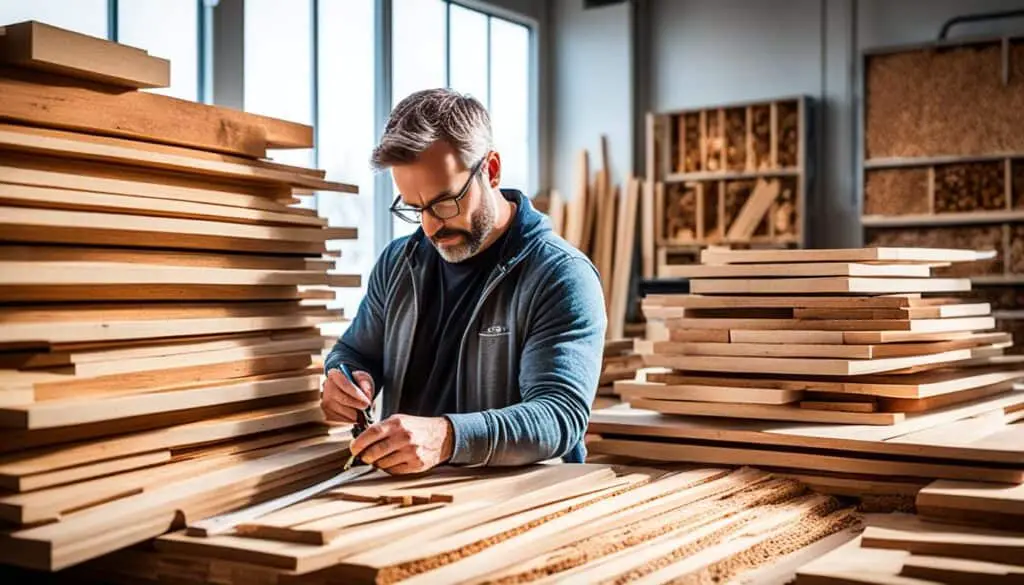
Common Mistakes to Avoid in Woodworking Materials Selection
When it comes to woodworking, selecting the right materials is crucial for the success of your projects. Whether you’re a beginner or an experienced woodworker, it’s important to be aware of common mistakes to avoid in woodworking materials selection. By avoiding these mistakes, you can ensure that your projects turn out beautifully and stand the test of time.
1. Neglecting to Plan and Measure
One of the biggest mistakes woodworkers make is not properly planning and measuring their materials. Before starting a project, take the time to create a detailed plan and accurately measure the dimensions of the wood you need. This will prevent wastage and ensure that you have enough materials to complete your project.
2. Ignoring Wood Quality and Grain
Choosing the right type of wood is essential for the outcome of your project. Avoid selecting wood with flaws, such as knots, splits, or warping. Additionally, pay attention to the grain pattern and direction, as it can affect the stability and appearance of the final piece.
3. Overlooking Wood Moisture Content
Wood absorbs moisture from its environment, which can lead to warping or shrinking once the project is complete. Avoid using wood with high moisture content, as it can cause structural issues. Invest in a moisture meter to ensure that the wood you select has an optimal moisture level for your specific project.
4. Failing to Consider Wood Species
Each wood species has unique characteristics that affect its appearance, durability, and workability. Before selecting a wood species, consider factors such as its hardness, density, and resistance to wear and tear. This will help you choose a wood that is suitable for your project’s requirements.
5. Not Checking Lumber Grade
Lumber is graded based on its quality and appearance. By ignoring lumber grades, you may end up with materials that are unsuitable for your project. Take the time to familiarize yourself with different lumber grades and select the appropriate grade based on your project’s needs.
| Mistake | Consequence |
|---|---|
| Neglecting to Plan and Measure | Wastage of materials, incomplete projects |
| Ignoring Wood Quality and Grain | Flawed appearance, structural instability |
| Overlooking Wood Moisture Content | Warped or shrunken final piece |
| Failing to Consider Wood Species | Inappropriate appearance, low durability |
| Not Checking Lumber Grade | Poor quality materials |
6. Disregarding Budget Constraints
Woodworking can be an expensive hobby, and failing to consider your budget can lead to overspending. Before purchasing materials, establish a budget and stick to it. Look for cost-effective options that still meet your project’s requirements.
7. Rushing the Selection Process
Choosing woodworking materials requires careful consideration and research. Rushing the selection process can result in regrettable choices. Take your time to explore different options, compare prices, and gather information about the qualities and characteristics of the materials you’re considering.
“The quality of your woodworking materials can make or break your project. Avoid these common mistakes to ensure that you achieve outstanding results every time.”
By being mindful of these common mistakes to avoid in woodworking materials selection, you’ll be able to enhance the quality and durability of your projects. Remember to plan and measure carefully, consider wood quality and species, check moisture content, and stay within your budget. By taking these precautions, you’ll be on your way to creating stunning woodworking masterpieces.

**Note**: The table is finished, including relevant mistakes and consequences.
Woodworking Safety Practices
Safety should always be a top priority in woodworking. When working with sharp tools and heavy machinery, it is crucial to follow proper safety practices to ensure the well-being of yourself and those around you. Here are some essential safety practices to follow:
1. Wear Protective Gear
Before starting any woodworking project, make sure to wear the necessary protective gear. This includes safety glasses to protect your eyes from flying debris, earplugs or earmuffs to prevent hearing damage from loud machinery, and a dust mask to avoid inhaling harmful dust particles.
2. Familiarize Yourself with the Tools
Prior to using any woodworking tool or machine, take the time to read the instruction manuals and understand their proper usage. Each tool has its own safety guidelines, so it is important to familiarize yourself with them to avoid accidents or injuries.
3. Keep Your Workspace Clean and Organized
Maintaining a clean and organized workspace is essential for woodworking safety. Clear away any clutter or obstacles that may cause accidents. Keep your tools properly stored and arrange your materials in a way that allows for easy access and movement.
4. Use Safety Guards and Devices
Never remove or disable safety guards on woodworking machinery. These guards are designed to protect you from potential hazards and should always be in place during operation. Additionally, use safety devices such as push sticks, featherboards, and hold-downs to safely guide materials through cutting operations.
5. Take Breaks and Stay Alert
Woodworking can be physically demanding, so make sure to take regular breaks to rest and rejuvenate. Fatigue can lead to accidents, so it’s important to stay alert and focused while working. If you are feeling tired or distracted, take a break and come back to your project later when you can give it your full attention.
6. Properly Maintain and Inspect Tools
Regularly inspect and maintain your woodworking tools to ensure they are in good working condition. Replace any damaged or worn-out parts promptly. Dull or damaged cutting tools can cause accidents, so it’s important to keep them sharp and properly maintained.
7. Seek Professional Instruction
If you’re new to woodworking, consider taking a class or seeking professional instruction. Learning proper techniques and safety practices from experienced woodworkers can greatly reduce the risk of accidents and help you develop essential skills.
“Safety is not an accident. It is a choice.” – Unknown
8. Have a First Aid Kit On Hand
Accidents can happen, even with the strictest safety precautions. Always have a well-equipped first aid kit readily available in your woodworking workspace. It should include basic supplies such as band-aids, antiseptic solution, gauze pads, adhesive tape, and scissors.
By following these woodworking safety practices, you can mitigate the risks associated with woodworking and ensure a safe and enjoyable experience. Remember, safety is paramount, and it is always better to be cautious than to regret taking unnecessary risks.
Woodworking Safety Equipment
| Safety Equipment | Description |
|---|---|
| Safety Glasses | Protects eyes from flying debris. |
| Earplugs/Earmuffs | Prevents hearing damage from loud machinery. |
| Dust Mask | Avoids inhalation of harmful dust particles. |
| Work Gloves | Provides hand protection while handling materials and tools. |
| Protective Clothing | Covers skin and prevents injuries from sharp tools or accidental spills. |
| First Aid Kit | Contains essential supplies for minor injuries and accidents. |
The Importance of Skill Development in Woodworking
Woodworking is a skill that can be developed and improved over time. Whether you’re a beginner or an experienced woodworker, investing in skill development is crucial for enhancing your woodworking abilities and achieving outstanding results. Here are some reasons why skill development is important in woodworking:
- Refining Woodworking Techniques: Continuous skill development allows you to refine your woodworking techniques and methods. By learning new skills and practicing existing ones, you can improve your craftsmanship and create more intricate and sophisticated projects.
- Expanding Creativity: Skill development opens doors to new possibilities and helps you explore your creativity. As you gain proficiency in woodworking, you’ll be able to tackle more complex projects, experiment with different designs, and bring your unique ideas to life.
- Increasing Efficiency: With improved woodworking skills, you’ll become more efficient in completing projects. As you become familiar with different tools, techniques, and approaches, you’ll be able to work faster and more effectively, saving time and effort in the process.
- Building Confidence: Skill development in woodworking boosts your confidence and self-assurance. As you master new skills and overcome challenges, you’ll feel more capable and accomplished as a woodworker. This confidence will inspire you to take on more ambitious projects and push the boundaries of your abilities.
- Enhancing Precision: Developing your woodworking skills allows you to achieve greater precision and accuracy in your work. You’ll learn how to make precise measurements, execute intricate joinery, and create seamless finishes, resulting in high-quality craftsmanship that stands out.
- Adapting to New Technologies: The field of woodworking is constantly evolving, with new tools and technologies being introduced. Skill development ensures that you stay up-to-date with the latest advancements and can adapt to new woodworking technologies, expanding your capabilities and staying competitive in the industry.
Being dedicated to skill development is an ongoing journey in woodworking. Whether you’re attending workshops, seeking mentorship, or engaging in self-study, honing your skills will not only make you a better woodworker but also allow you to enjoy the process and satisfaction of creating beautiful and functional pieces with your own hands.
Resources for Woodworking Education and Inspiration
If you’re interested in furthering your woodworking education or seeking inspiration for your projects, there are various resources available. Here are some options to consider:
- Woodworking Classes: Taking woodworking classes can provide you with hands-on learning experiences and guidance from expert instructors. Look for local woodworking schools or community colleges that offer courses tailored to different skill levels and topics, such as woodworking basics, furniture making, or woodturning.
- Woodworking Tutorials: Online platforms and video-sharing websites are excellent sources of woodworking tutorials. You can find step-by-step instructions, tips, and techniques shared by experienced woodworkers. Check out popular websites like YouTube or dedicated woodworking tutorial websites to discover a wealth of tutorial videos to sharpen your skills.
- Woodworking Books: Expand your knowledge and understanding of woodworking with instructional books written by renowned woodworkers and experts. These books cover a wide range of topics, from beginner guides to advanced techniques, design inspiration, and project ideas. Visit your local library or bookstore to explore the vast selection available.
- Woodworking Magazines: Woodworking magazines offer a wealth of information, including project plans, tool reviews, and expert tips. Subscribing to a woodworking magazine allows you to stay updated on the latest trends, techniques, and industry news. Some popular woodworking magazine options include Woodsmith, Fine Woodworking, and Popular Woodworking.
- Woodworking Online Communities: Engaging with fellow woodworkers through online forums and communities can provide valuable insights, feedback, and inspiration. Joining these communities allows you to connect with like-minded individuals, seek advice, and share your projects. Platforms like Reddit’s woodworking subreddit and woodworking-focused forums offer a supportive and interactive environment for woodworkers of all skill levels.
- Woodworking Blogs: Many woodworkers and woodworking enthusiasts share their knowledge, projects, and experiences through blogs. Reading woodworking blogs can give you a glimpse into the creative processes of other woodworkers, as well as provide project ideas, tutorials, and design inspiration. Explore popular woodworking blogs such as The Wood Whisperer, Popular Woodworking Blog, and Woodworking for Mere Mortals.
- Woodworking Exhibitions and Trade Shows: Attending woodworking exhibitions and trade shows allows you to explore a wide variety of woodworking resources all in one place. These events often showcase the latest woodworking tools, machinery, materials, and techniques. You can also attend workshops, demonstrations, and presentations by industry experts. Keep an eye out for local and national woodworking events in your area.
By utilizing these woodworking education and inspiration resources, you can enhance your skills, find new project ideas, and stay connected with the vibrant woodworking community.
| Resource | Description |
|---|---|
| Woodworking Classes | Hands-on learning experiences and guidance from expert instructors |
| Woodworking Tutorials | Step-by-step instructions, tips, and techniques shared by experienced woodworkers |
| Woodworking Books | Instructional books covering a wide range of topics and skill levels |
| Woodworking Magazines | Project plans, tool reviews, and expert tips in print and digital formats |
| Woodworking Online Communities | Forums and communities for connecting with fellow woodworkers |
| Woodworking Blogs | Blogs sharing knowledge, projects, and experiences of woodworkers |
| Woodworking Exhibitions and Trade Shows | Showcasing the latest tools, machinery, materials, and techniques |
Conclusion
Woodworking is a rewarding hobby that allows you to unleash your creativity while crafting beautiful and functional projects. To ensure the success of your woodworking endeavors, it is crucial to have the right woodworking materials at your disposal. Whether you are a DIY enthusiast or a professional woodworker, investing in high-quality woodworking materials, including lumber, tools, and supplies, is essential for achieving superior craftsmanship.
When it comes to woodworking materials, the type of lumber you choose can greatly impact the final result. From hardwood to softwood, different types of wood offer unique characteristics and suitability for various projects. Additionally, having a set of essential woodworking tools is crucial to make precise cuts, shape wood, and assemble your creations with accuracy.
Furthermore, don’t underestimate the importance of woodworking supplies. From sandpaper and finishes to adhesives and fasteners, having the right supplies ensures smooth project execution and long-lasting results. Whether you prefer to shop at a specialized woodworking store or a local lumberyard, there are plenty of options available to find high-quality woodworking materials.
In conclusion, investing in the best woodworking materials is a crucial step in your woodworking journey. The right materials will not only help you achieve superior craftsmanship but also enhance the overall satisfaction and enjoyment of your woodworking projects. So, gear up with the right woodworking materials, unleash your creativity, and embark on your next woodworking adventure with confidence.
FAQ
What are the top woodworking materials for projects?
The top woodworking materials include lumber, tools, and supplies such as woodworking hardware.
What are some essential woodworking tools?
Essential woodworking tools include power drills, jig saws, circular saws, sanders, mallets, chisels, and clamps.
What are some common types of lumber used in woodworking?
Common types of lumber used in woodworking include hardwood lumber and softwood lumber.
What are some essential woodworking supplies?
Essential woodworking supplies include woodworking hardware and other materials available at a woodworking store.
What types of wood are suitable for DIY woodworking projects?
Popular choices for DIY woodworking projects include various types of wood suitable for beginners.
Where can I find high-quality woodworking materials?
You can find high-quality woodworking materials at lumber yards and woodworking stores.
What is woodworking hardware?
Woodworking hardware refers to the various components and accessories used in woodworking projects.
What are some advanced woodworking tools and equipment?
Advanced woodworking tools and equipment include professional-grade tools that enhance productivity and efficiency.
Why is using high-quality woodworking materials important?
Using high-quality woodworking materials ensures better results and durability in your projects.
How can I choose the right woodworking materials?
You can choose the right woodworking materials by considering factors such as project requirements and budget.
What mistakes should I avoid when selecting woodworking materials?
Common mistakes to avoid include not considering the project requirements and not inspecting the lumber for defects.
What safety practices should I follow in woodworking?
It is important to follow safety practices such as wearing protective equipment and using tools properly.
Why is skill development important in woodworking?
Skill development is important in woodworking to improve your craftsmanship and tackle more complex projects.
What resources are available for woodworking education and inspiration?
You can find woodworking education and inspiration through resources such as woodworking classes and tutorials.
What are the benefits of investing in high-quality woodworking materials?
Investing in high-quality woodworking materials ensures the best results in your projects and enhances your woodworking experience.





